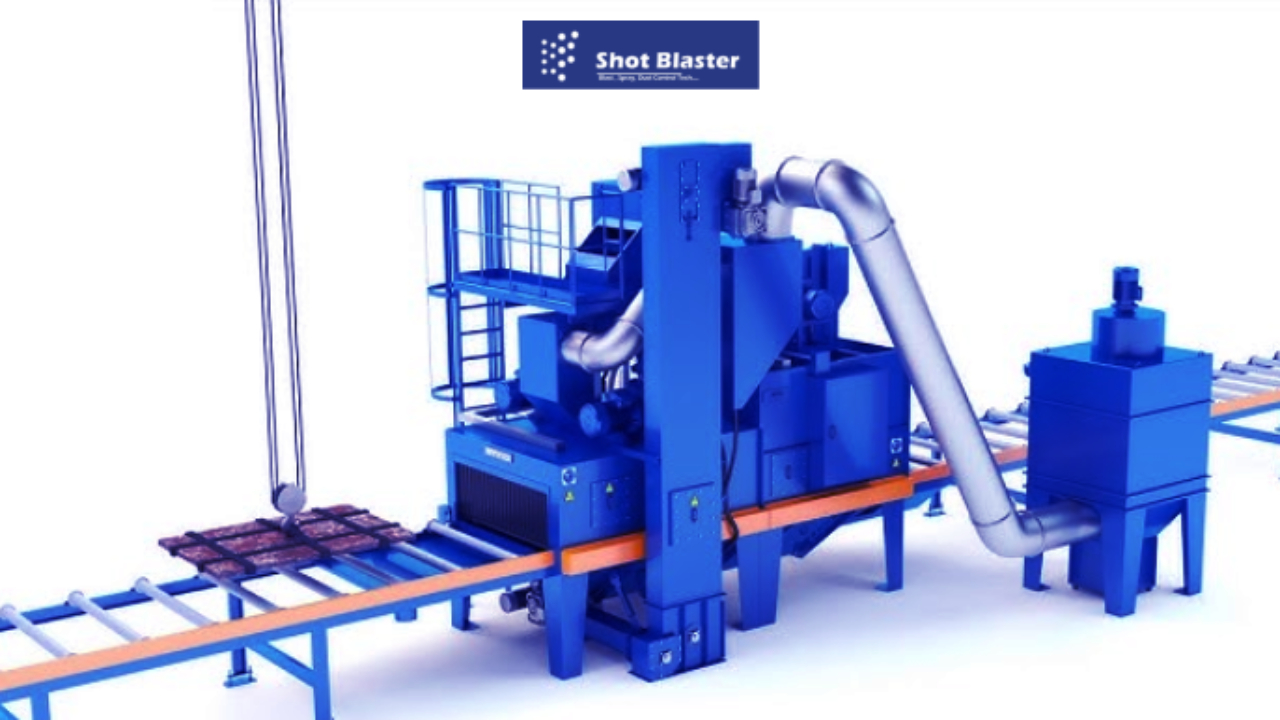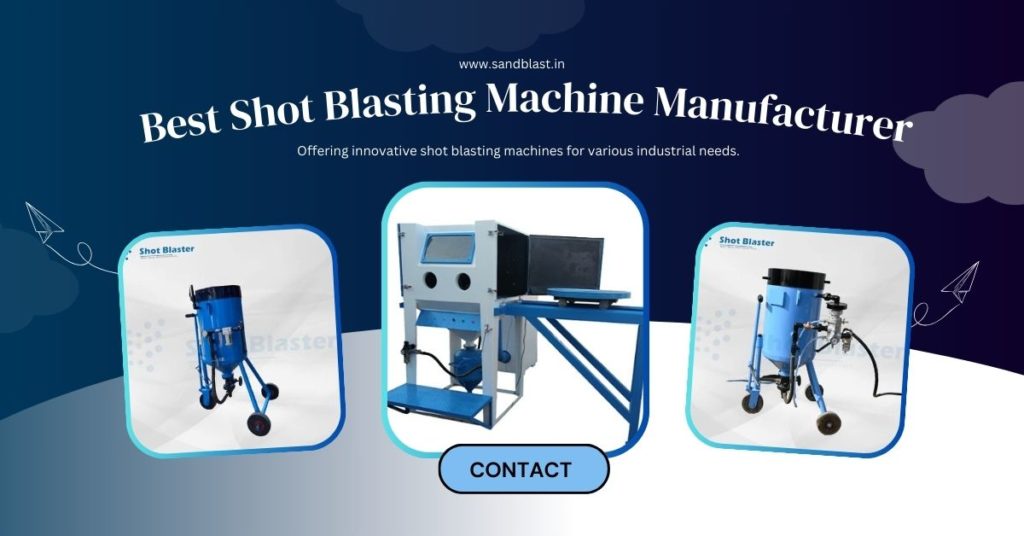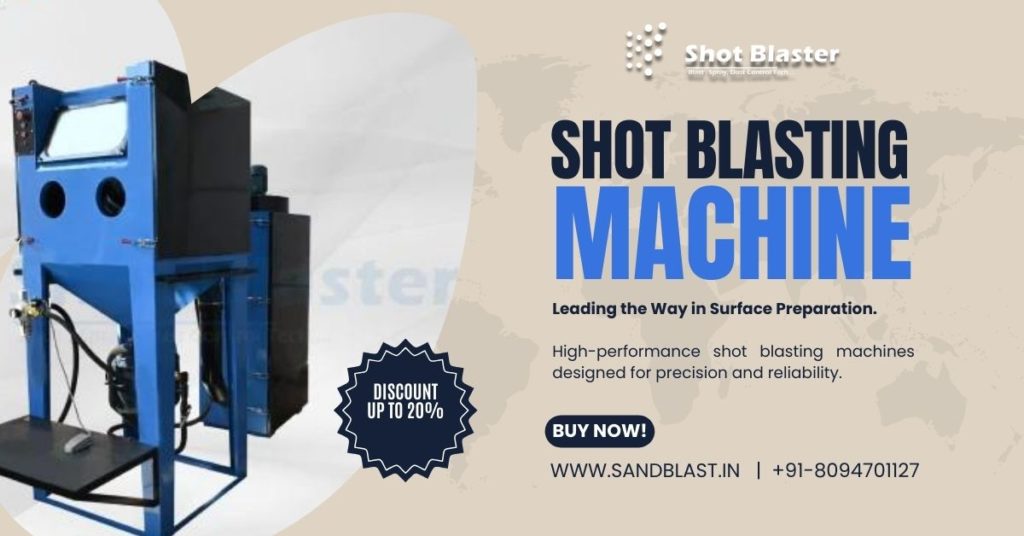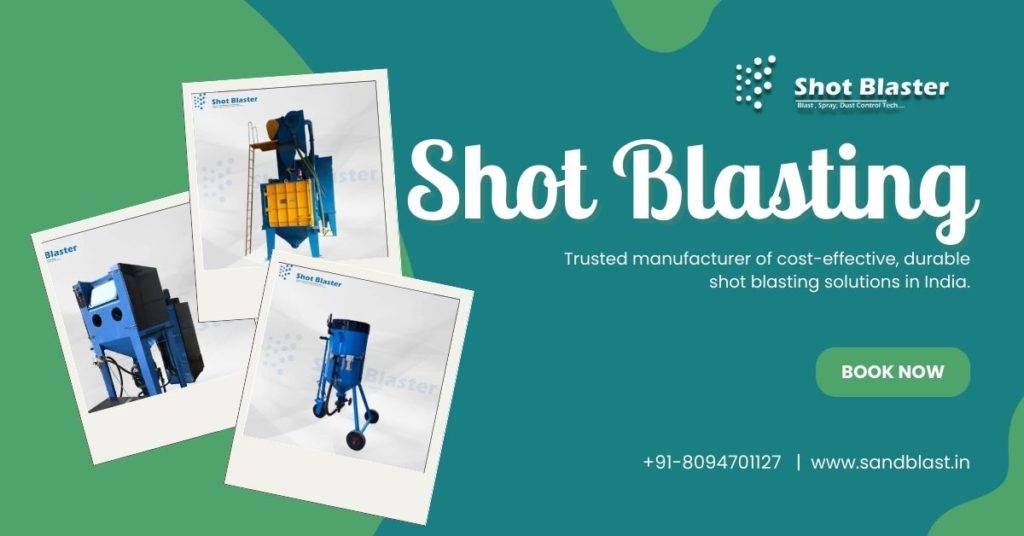Discover how Airless Shot Blasting is revolutionizing surface finishing techniques. Learn how this innovative technology is improving efficiency, cost-effectiveness, and environmental impact for industries worldwide.
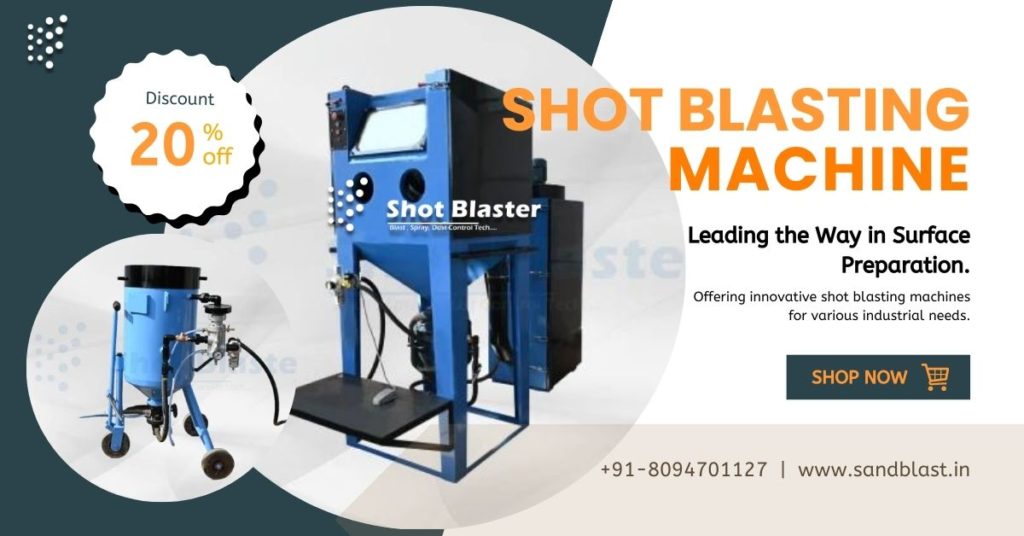
Introduction
Surface finishing has long been a critical part of industries such as automotive, aerospace, manufacturing, and construction. The process is integral to ensuring the durability, aesthetic appeal, and quality of various materials. Over the years, numerous methods have evolved, with one of the most exciting being airless shot blasting machine. This cutting-edge technique is changing the game by offering a more efficient, eco-friendly, and cost-effective solution for surface preparation and finishing.
But what makes airless shot blasting stand out? And what does the future hold for this technology? In this article, we’ll explore the future of surface finishing with airless shot blasting solutions and why shot blasters are the technology of tomorrow.
Also Check – Shot Blasting Machine | Shot Blasting Machine Manufacturer | Buy Shot Blasting Machine
What is Airless Shot Blasting?
Before diving into the future of this technology, let’s first understand what airless shot blasting is. Simply put, airless shot blasting is a surface preparation technique that uses high-velocity abrasive media to clean or prepare the surface of a material. Unlike traditional air-driven shot blasting, airless shot blasting systems utilize mechanical power to propel the abrasives, which eliminates the need for compressed air. This process offers several advantages, including greater control, improved efficiency, and a reduced environmental footprint.
How Does Airless Shot Blasting Work?
- Abrasive Materials: Airless shot blasting machines use various types of abrasive media, including steel shot, grit, and other materials, depending on the specific surface finish required.
- Mechanical Impeller: The key difference in airless shot blasting lies in the mechanical impeller, which propels the abrasives at high speed onto the surface.
- Surface Impact: The abrasives hit the surface, removing contaminants, rust, scale, and other impurities, while also improving surface roughness or profile for better bonding.
The Benefits of Airless Shot Blasting
Now that we know how airless shot blasting works, let’s delve into why this technology is becoming increasingly popular for surface finishing:
1. Increased Efficiency
Airless shot blasting systems are known for their faster processing times. Traditional methods often rely on compressed air, which can be inconsistent and require more energy to operate. Airless systems, on the other hand, use mechanical force, offering a more direct and efficient application of force. This leads to faster turnaround times and more consistent results.
Read the full story – https://riyasingh258.blogaaja.fi/how-to-choose-the-right-shot-blasting-machine-for-your-needs/
2. Cost-Effectiveness
While the initial investment in airless shot blasting equipment can be high, the long-term savings make it an attractive option for many industries. The reduced energy consumption, lower maintenance requirements, and increased throughput all contribute to a lower cost per unit, making this technology an excellent return on investment.
3. Environmental Impact
Airless shot blasting is a more sustainable solution compared to traditional air-based methods. Since it doesn’t require compressed air, it uses less energy and reduces emissions. Additionally, the abrasives used in airless shot blasting can often be recycled, further reducing the environmental footprint of the process.
4. Improved Surface Quality
Airless shot blasting provides superior surface profiles and finishes, which are crucial in industries like aerospace and automotive, where precision matters. The mechanical nature of the process offers more control over the intensity of the blasting, which ensures a more consistent finish.
5. Reduced Maintenance Costs
Traditional air-driven shot blasting systems often experience wear and tear due to the high demand placed on the air compressors. Airless systems eliminate this concern, as the lack of compressed air means less stress on equipment and fewer parts to maintain.
Also Check – Shot Blasting Machine Price | Best Shot Blasting Machine
The Future of Surface Finishing with Airless Shot Blasting Solutions
The future of surface finishing is looking brighter than ever, thanks to innovations in airless shot blasting solutions. As industries continue to evolve and demand higher standards for quality and sustainability, airless shot blasting is positioning itself as a frontrunner for surface preparation. Let’s explore some of the key trends shaping the future of this technology.
1. Automation and Integration with Robotics
As automation becomes more prevalent across various industries, the integration of airless shot blasting with robotic systems is inevitable. Imagine robotic arms handling the blasting process with precision, ensuring uniformity and consistency across large-scale production lines. This would not only enhance efficiency but also improve safety by reducing human involvement in potentially hazardous environments.
2. Customization of Surface Profiles
With advancements in software and control systems, airless shot blasting machines can be programmed to deliver highly customized surface profiles. Industries such as aerospace, automotive, and electronics will benefit from this capability, as the ability to fine-tune the surface texture can directly impact the performance and longevity of parts.
3. Enhanced Energy Efficiency
The future of surface finishing will likely see even more energy-efficient airless shot blasting systems. With growing pressure to reduce carbon footprints and lower energy consumption, manufacturers are already working on improving the design of airless shot blasting equipment to make it more energy-efficient. This will not only benefit the environment but will also help businesses reduce their operational costs.
4. Integration with Sustainable Materials
As sustainability becomes a key focus in all sectors, the use of eco-friendly abrasives and materials in airless shot blasting will rise. We can expect to see more sustainable and recyclable abrasives being developed for this process, reducing waste and making the overall process even greener.
5. Better Control and Monitoring
The future will also bring advancements in the control and monitoring of airless shot blasting systems. With the integration of Internet of Things (IoT) technology and AI, manufacturers will be able to track the performance of shot blasters in real time, optimizing the process for efficiency, quality, and energy usage. Predictive maintenance will also reduce downtime, further improving productivity.
Also Check – Shot Blasting Machine Manufacturers in India | Shot Blasting Machine for Sale
Applications of Airless Shot Blasting
The versatility of airless shot blasting makes it suitable for a wide range of industries. Here are a few key sectors where this technology is making a significant impact:
1. Automotive Industry
Airless shot blasting is used to clean and prepare surfaces for coatings, rust removal, and to improve the appearance and durability of automotive parts.
2. Aerospace
In aerospace, airless shot blasting plays a critical role in preparing parts for coatings and ensuring the structural integrity of components that will be subjected to extreme conditions.
3. Construction and Infrastructure
Airless shot blasting helps to clean and prepare surfaces such as steel and concrete in the construction industry, ensuring better adhesion for coatings and improving durability.
4. Shipbuilding
Shipbuilders use airless shot blasting to remove rust, corrosion, and contaminants from steel surfaces, ensuring ships are both visually appealing and protected from the elements.
5. Energy Industry
From wind turbines to oil rigs, airless shot blasting ensures that surfaces are properly prepared for coating and treatment, increasing the lifespan and performance of energy-related infrastructure.
Get all the answers – https://riyasingh258.blogaaja.fi/a-complete-guide-to-understanding-shot-peening-machines/
Frequently Asked Questions (FAQs)
What’s the difference between traditional shot blasting and airless shot blasting?
The key difference is that airless shot blasting uses mechanical force to propel the abrasives, while traditional shot blasting relies on compressed air. This makes airless shot blasting more energy-efficient and cost-effective.
Is airless shot blasting suitable for all types of surfaces?
Yes, airless shot blasting can be used on a wide variety of materials, including metal, concrete, and plastics, making it highly versatile for different applications.
How do airless shot blasting machines work?
Airless shot blasting machines use a mechanical impeller to propel abrasive materials onto the surface. This removes contaminants and prepares the surface for further treatment, all while providing a more consistent finish.
Are airless shot blasting systems easy to maintain?
Yes, airless shot blasting systems typically require less maintenance than their air-driven counterparts due to fewer moving parts and the absence of an air compressor.
Also Check – https://cutt.ly/Re9OXAD3 | | https://shorturl.at/zeKzq | https://shorturl.at/oPRgI | https://rb.gy/sljqqa
Conclusion
The future of surface finishing is undoubtedly tied to innovations like airless shot blasting solutions. This technology is setting new standards for efficiency, sustainability, and precision in surface preparation and finishing. As industries continue to demand higher performance and environmental responsibility, airless shot blasting will continue to evolve, bringing even greater benefits to manufacturers and businesses worldwide.
Whether it’s improving efficiency, lowering costs, or reducing environmental impacts, airless shot blasting is truly the surface finishing solution of the future. Get ready to embrace the change, because the future is here with airless shot blasting!
Buy Shot Blasting Machine at the Best Price! Get high-quality portable shot blasting machines for superior surface preparation. Visit the URL – https://www.sandblast.in/product/Portable-shot-blasting-machines


